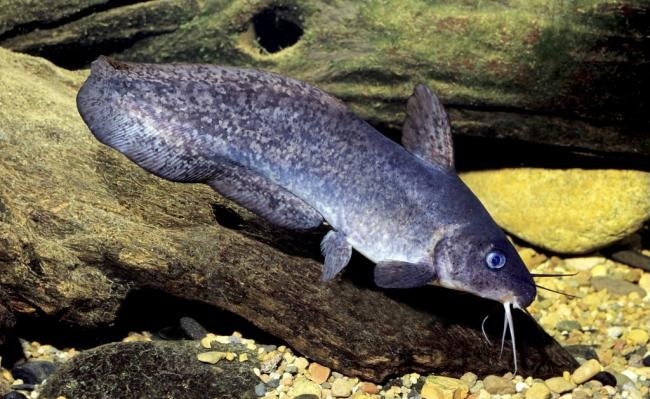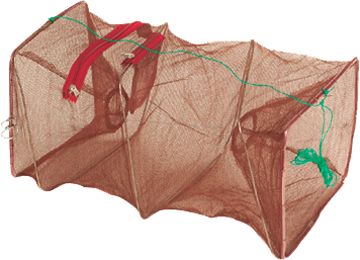
Great white shark, Carcharodon carcharias
Original story by Louis Sahagun at Phys.org (USA)
It's a mystery of the sea: How many great white sharks are prowling near California's surf lines? Some scientists say the population is large and healthy. Others say it is alarmingly small. No one has ever known for certain, but the question has become crucial this year.
State and federal authorities are weighing a request to classify the fish scientists know as Carcharodon carcharias as an endangered species worth preserving at all costs, a step that could, among other things, wipe out what's left of a gill net fishing industry that inadvertently snares great whites.
"This is a tough one - we are keenly aware that the scientific community is polarized on this issue," said Adrianna Shea, deputy chief of the California Department of Fish and Game Commission.
Great white sharks are apex predators, meaning they feed at the top of the food chain and are naturally low in abundance.
Few creatures possess the fearsome mystique of the white shark, which can reach 21 feet, weigh 3{ tons and hunts near surf lines shared by surfers, scuba divers and swimmers.
The National Marine Fisheries Service and the state Department of Fish and Wildlife have been researching the health of the great white population since last year, when the environmental groups Oceana, Shark Stewards and the Center for Biological Diversity filed petitions calling for endangered species protection.
The groups were reacting to the first - and only - census of great whites ever attempted. Conducted by UC Davis and Stanford University researchers and published in the journal Biology Letters in 2011, the census estimated that only 219 adult and sub-adult great whites lived off the Central California coast, and perhaps again that many in the entire northeastern Pacific Ocean, including Southern California.
Other shark experts claim the actual population is several times larger, a legacy of state and federal laws curbing pollution, banning near-shore gill netting, protecting sharks and halting the slaughter of marine mammals they prey on.
The authors of the census study declined to comment on the merits of the petitions. However, one of the them, Sal Jorgensen, who is now a research scientist at the Monterey Bay Aquarium in Monterey, said, "I don't think there is an imminent threat.
The money being spent by the government to evaluate this issue would be better spent trying to evaluate this question: Is the number of white sharks rising or falling?"
The census was conducted from 2006 to 2008 on sharks that gather around Tomales Point, near Bodega Bay, and the Farallon Islands off the San Francisco coast from late July until late January.
The researchers assumed the population is closed during the study period, meaning no sharks leave or join the group, and that it returns to the area in precise annual homecomings, making reliable census estimates possible.
The researchers lured great whites close to their boat by slowly pulling a fake seal. They identified 131 individual sharks by the distinctive patterns of nicks, notches and scars on the trailing edge of their dorsal fins and then used mathematical models to calculate the likely population.
The lead authors of the study, Taylor Chapple, a doctoral student at UC Davis when the work was done, and Barbara Block, a professor in marine sciences at Stanford's Hopkins Marine Station in Pacific Grove, acknowledged that the estimate of 219 was lower than they expected for the Central California portion.
"It's a lot easier counting elephants and lions," Block said, referring to animal counts in Tanzania's Serengeti region. "But we're not off the mark by 2,000 sharks."
State and federal regulators, who are expected to make their decision on endangered species status this year, have conducted research and held hearings to analyze the accuracy of the census.
Among the rebuttals to the census is one from Michael L. Domeier, a leading shark expert and president of the Marine Conservation Science Institute.
Domeier's long-term monitoring of white sharks suggests the actual population is not closed and much larger. In a critique of the census, he said adult females do not always visit the coastal aggregation sites, and sub-adult white sharks are spread out over a much larger geographic area than adults.
George H. Burgess, curator of the Florida Museum of Natural History's International Shark Attack File, is among nine scientists nearing completion on a separate census study that will show that there are more than 2,000 adult and sub-adult white sharks off Central California. That study is expected to be submitted for review by state and federal regulators.
Chris Lowe, a professor of marine biology at Cal State Long Beach who has been conducting state and federally permitted white shark research since 2002, said, "The growth of the great white shark population is the most stunning recovery of a marine fish species we have."
On a recent weekday, Lowe watched as anglers lined a rail at Manhattan Beach Pier trying to snag halibut, bonito and yellowtail. Beneath the waves, a receiver he had installed was picking up the pings of transmitters attached to young white sharks.
"The potential for catching a great white shark off this pier is pretty good," he said.
Eric Martin, educational co-director of the Roundhouse Aquarium at the end of the pier, recalled a weekday last July when a fisherman hooked a 7-foot white shark. Martin explained that it was illegal to land the fish, but the fisherman refused to let it go.
Martin cut the line with a knife.
Until that day, four white sharks had been caught off the pier since 1980. Last year alone, anglers hooked four juvenile white sharks. A 7-footer was caught and released three weeks ago.
"I have a new strategy for dealing with fishermen and white sharks," Martin said with a smile. "I let the fisherman fight it as long as he wants. When the shark gets close, I take a picture of it and the fisherman. Then I urge him to let it go."
After that, Martin makes prints of the photos and gives them to the fisherman as souvenirs.








